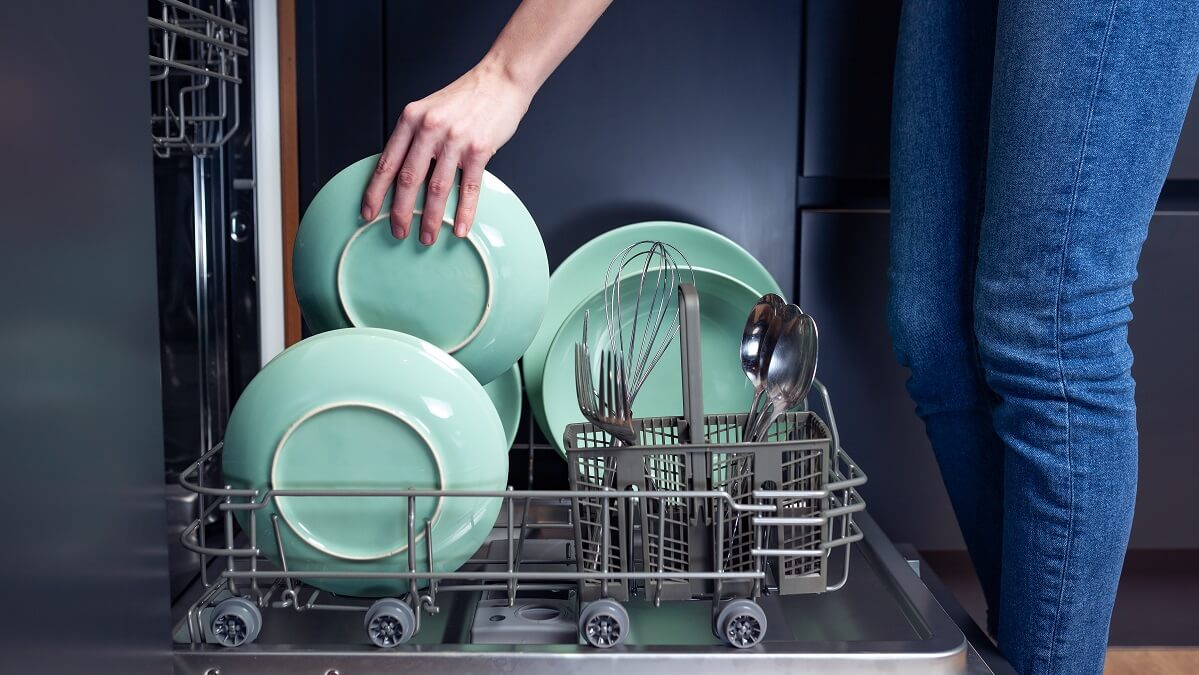You may have been stacking your dishwasher for years, maybe decades, but have you been doing it correctly?
This is how you should stack your dishwasher for the best results every time.
What not to wash
While some of us may have a ‘just chuck it in and see what happens’ policy when it comes to dishwashers, there are some items that should never be machine washed.
Don’t put wood in the dishwasher – it absorbs moisture and the odours from everything else that’s in there.
Aluminium and copper are reactive metals, meaning they’re prone to discolouration and corrosion in your dishwasher and should be handwashed.
Don’t put your good knives in either. The water pressure and detergents can blunt the knife blade and high temperatures may even cause the blade to warp.
High temperatures can also damage fine china and crockery.
Position, position, position
That adage is regularly applied to real estate, but it also matters when stacking your dishwasher.
Glass, which can break under heat and pressure, should be placed on the top shelf, where it is less likely to shatter. Plastics should also be placed on the top shelf to reduce the risk of melting or warping in the heat.
Place other small items, such as cups, mugs, small bowls and plates, in the top or middle rack. Ensure there is a gap between each item so their surfaces are exposed to detergent and water.
Place anything with a concave side face down to avoid them filling with soap and dirty water.
Place heavy items such as large crockery, pots and pans in the bottom rack.
You may notice that the spinning arm at either the top or bottom of your machine moves in a circular motion, meaning that the corners of the machine can sometimes be neglected. You should, therefore, place dirtier items closer to the centre of the machine.
It’s also important to make sure that the spinning arm that usually sits at the very bottom or top of the machine’s interior, is not caught on any poorly fitted items. If its movement is limited or stopped altogether, the machine won’t wash properly.
Cutlery
Cutlery is either stacked in a low tray at the top of the machine or in a basket at the bottom.
If you have a cutlery tray, you’ll notice the distinct grooves made for each cutlery item. While slightly more time-consuming than simply laying your cutlery across it, placing each item into the grooves is more likely to get you a better result.
If you have a cutlery basket, place knives and forks facing down and you’ll be less likely to hurt yourself when removing them. However, place spoons with their heads facing up to save space and give them a good wash.
Dishwashing tablets
If you use a dishwashing tablet labelled ‘three in one’ or multi-tab, you may be better off placing the tablet at the bottom of the machine rather than in the dispenser. This is because they contain detergents designed for early release in the washing process, while the dispenser will only open during the main wash.
Do you have any tips on best dishwasher practice? Why not share them in the comments section below?
Also read: How to clean tricky household items


Rinse Aid! 99% of people believe that the blue section of the dishwasher sachet is rinse aid – so you don’t need any more.
Having taught housewives and families how to load their dishwasher for a lot of years, Rinse Aid is the secret to sparkling glasses, cups cutlery and crockery.
It costs nothing for a bottle – that lasts for 6 months – and the results are stunning!